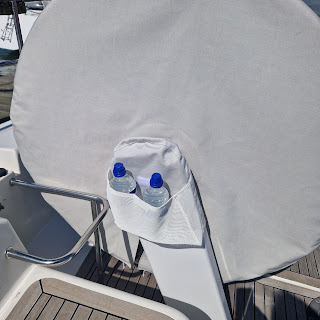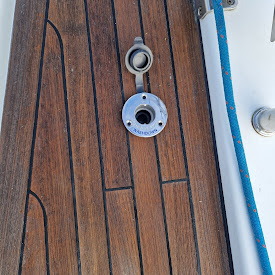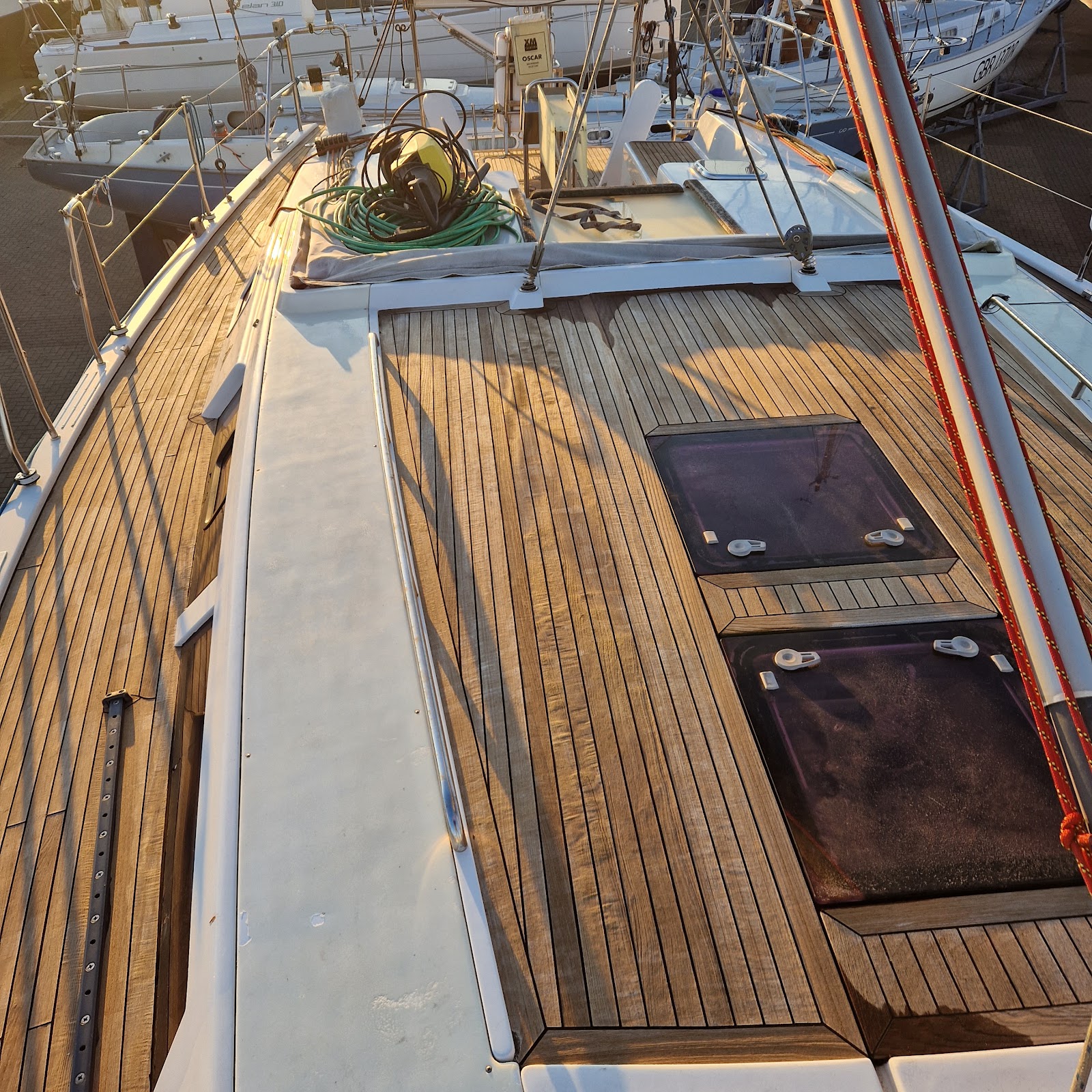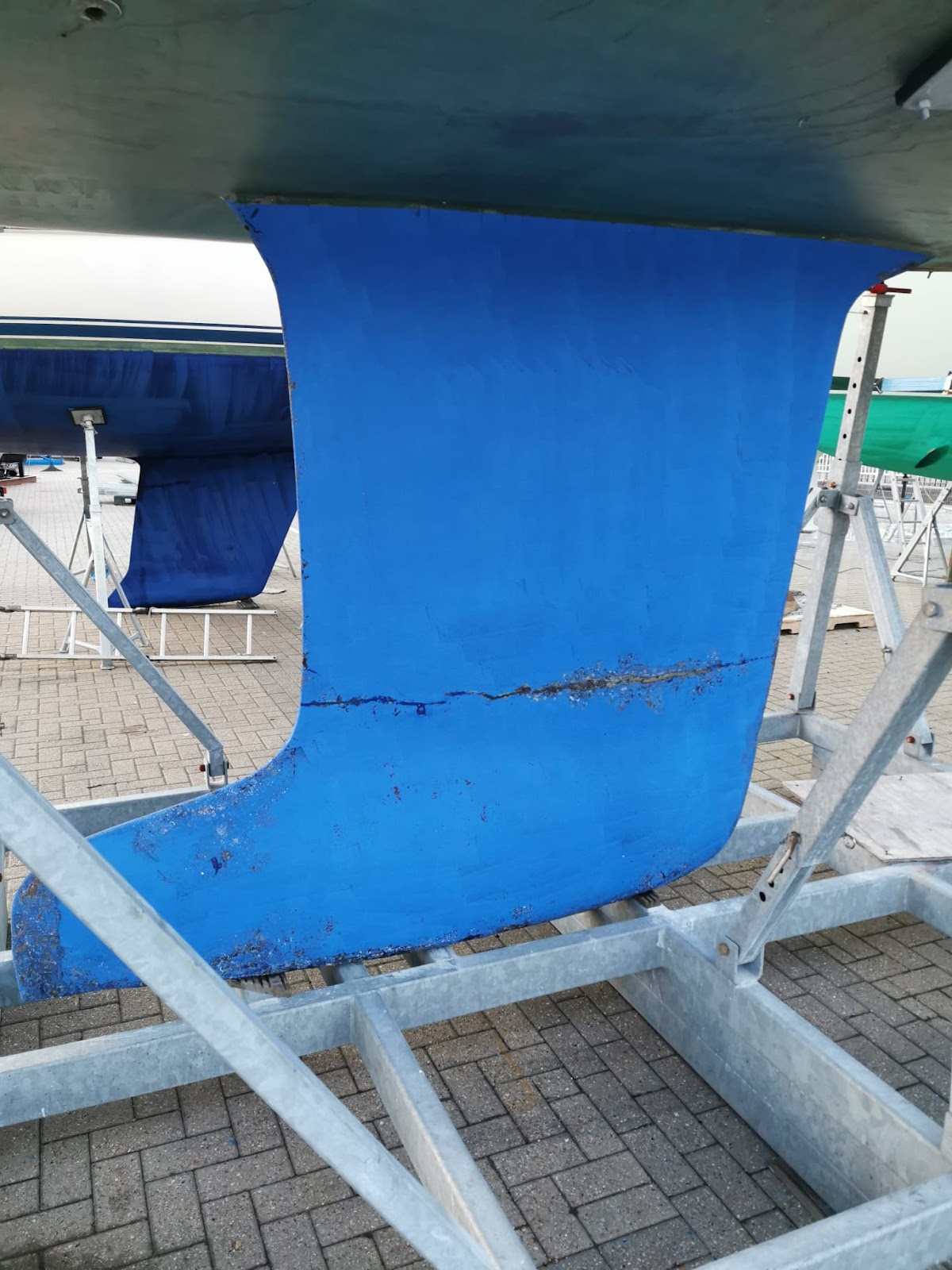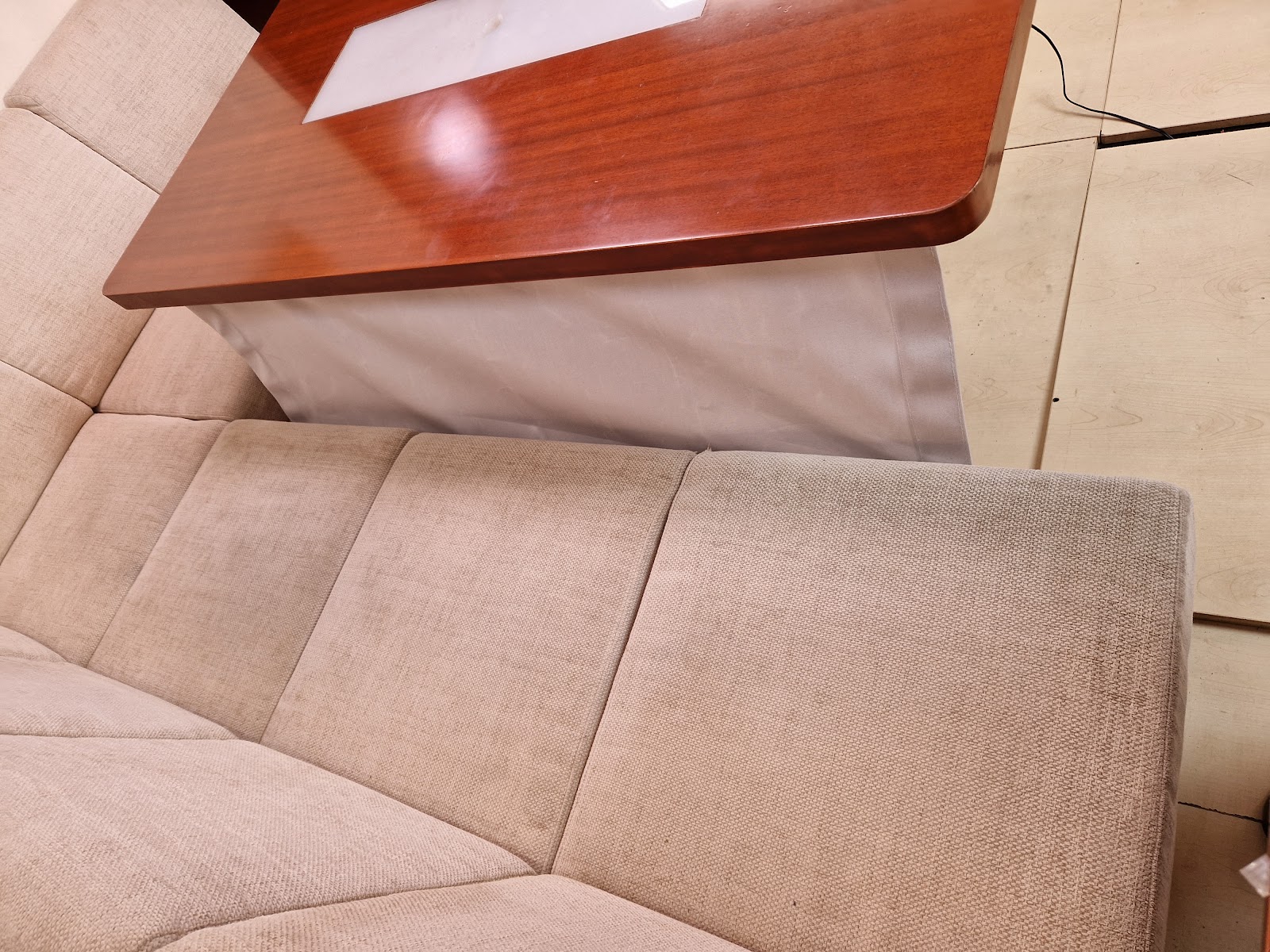The weather always is an element to consider when I come out and usually this far south in the UK it is reasonably mild, despite the moanings of the residents. Being out of the water and suspended in the air in the cradle means that the temperature around the base of the hull is probably colder than it is inside.
This year, unlike in previous years, due to the hike in energy prices, Skipper is being charged for the electricity he uses, as explained in previous editions. Presumably, it was built into the fees previously and lost, rather than being an element on the bill, which it now is and so a meter has been fitted along my shore power cable. In the past, I had an oil-filled radiator on a timer and a heater element on low(ish), with a dehumidifier running. Now, the dehumidifier is only on when Skipper comes on board and he sets it to turn off up to five or six hours after he's left. The radiator comes on only during the early hours and if he's working on me he may run the Webasto heater for a couple of hours, to warm me up inside and him when he stops for tea or has lunch.
However, the cold or rain is not conducive to working outside and the inside jobs can be done at any time. And so, time ticks on, and what was three months on the hard soon becomes two, then one. Skip struck a deal, in that rather than all the boats behind penning me in, having to be moved, to get me out for the pre-arranged launch date, Skip suggested that I remain there for another month at the lower winter rate. Again in the past, I have been moved to the marina itself where the internal jobs can be done but shore power is still available.
The keel was filled rubbed down filled and sanded again and then Copper Coated job done. Hopefully, the crack that always appears each year I come out will not, let's see.
The weather has changed them slightly from these shots
and they've been rubbed back slightly to expose
There's always a great list of winter jobs, those that are necessary and the 'would like's'.
This year's 'would like' was to fit the deck wash pump, whose parts had been steadily arriving end of last year. Late summer, the back plate for the pump itself had been drilled, and the nuts for the bolts had been countersunk and resin into position and painted. The glass fiber resin enables the bolt to be undone without the need to access the nuts, which when fixed are between the bulkhead and the plate, glued and screwed into position.
Deck wash pump sits in with the bow thruster
wiring was already there back
to the control board
So a 15mm domestic underfloor heating pipe was fed through my bilge from the fresh water tanks looping around under the floor of the master cabin and back to the cupboard in the ensuite. In here, is the clever bit, a valve. This valve switches between the freshwater pipe and the seawater pipe, taken from the flushing system of the heads. Depending on what you cleaning down you have an option, fresh water to remove the salts from the pulleys by the mast and salt water to clean the mud off the anchor and wash the deck.
Although the 15mm domestic underfloor heating pipe
looks to be the same size, but it isn't, hence the
reinforced pipes at the sides.
The Hanse pipework is also much thicker,
probably acts as an insulator
Having fitted all the pipework, the valve on the deck by the anchor locker and wired it in, it appeared not to want to draw water from the tank, seawater can't be tested till I'm actually in it! 24 hours later on his return, the joints were checked and tightened and the pump ran again, water spurted 24" into the air - result. Due to another expected cold snap though, part of the system was drained down and 25mm thick foam pipe insulating was added to the section of pipe in the anchor locker and in the bow thruster compartment that now also houses the deck wash pump. The section of pipe to the pump is easily accessible and as such can be disconnected and drained down.
The switching valve under the sink in the master cabin ensuite,
above the lowered shower pump.
This is a push-in valve that stops water from entering, only exiting, black plastic fitting on the right is pushed in and locked, waiting for a 90 degree bend so that the hose lays on the deck rather than heads skywards.
The manual anode fitting was also replaced with a better solution enabling easy access at the point where the bolted joint is.
The hull has been washed in a boat cleaning solution and is waiting to be polished. Skipper having spoken to one of the professionals has bought a product and waiting for better weather before undertaking the last job on the hard.
The gear oil in the sial drive has been changed and engine oil and filters are on board waiting for the servicing of the engine.
Time is running out and I'll be back in the water on the 29th (March), the day after Skipper returns from a short break in Ireland again.
Today 16th March, Skipper came down with his new product and set to on my Port side, managing to complete the whole side in the day. Bet he'll feel it in the morning! It's not supposed to be such a nice day tomorrow, so I may have my engine serviced giving his shoulders a rest.





